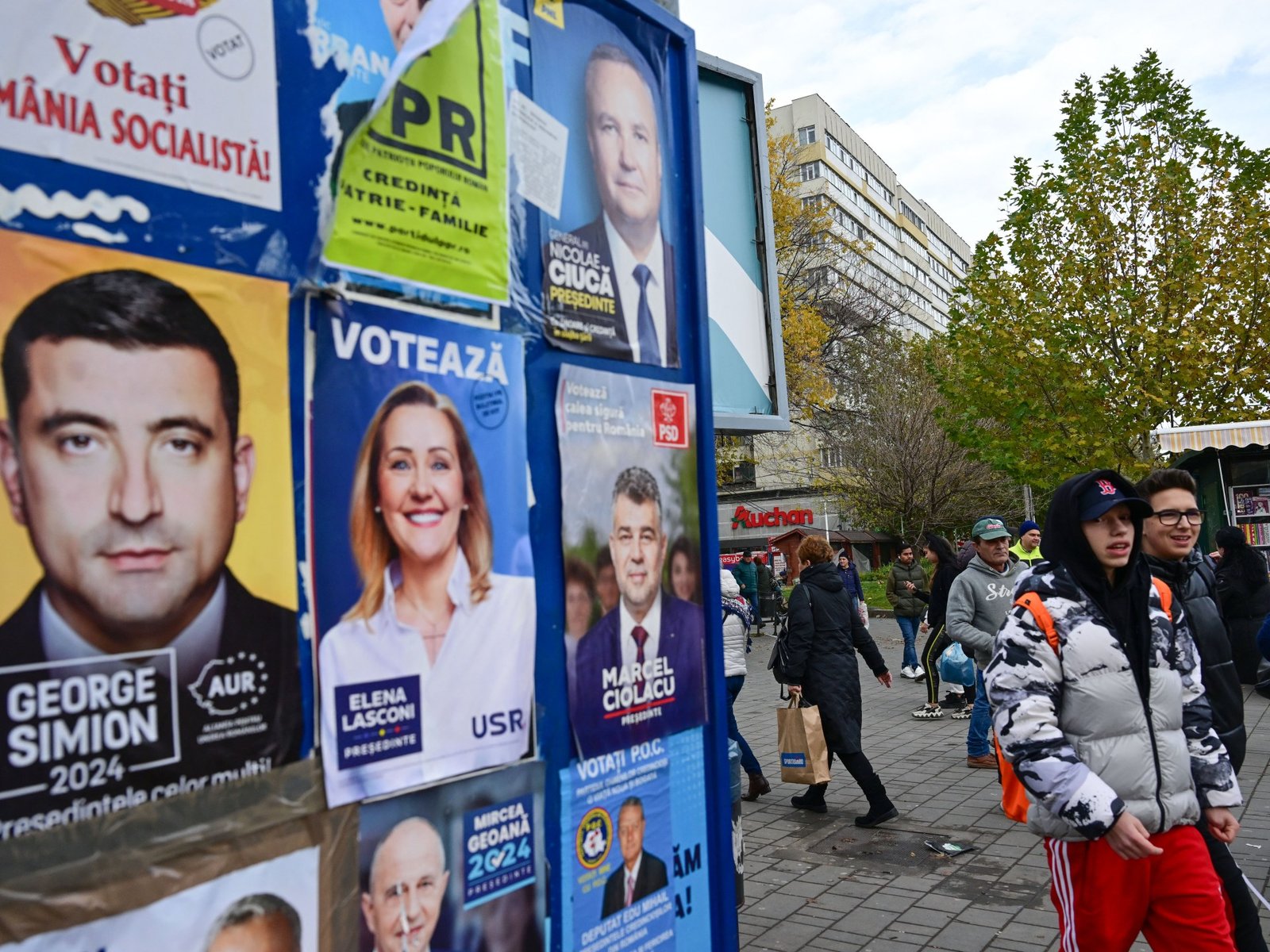Physical Address
304 North Cardinal St.
Dorchester Center, MA 02124
Physical Address
304 North Cardinal St.
Dorchester Center, MA 02124

In the second round of December 8, the far-right candidate Kalins Djordescu will meet with the centre-right competitor Jelena Laskoni.
Romania’s Constitutional Court has upheld the shock results of the first round of presidential elections, setting the stage for a Dec. 8 vote that could disrupt the country’s pro-Western orientation and undermine support for Ukraine.
Monday’s ruling clears the confusion that has gripped the nation since the court ordered a recount last week.
It also confirms the victory of a little-known far-right candidate on November 24 Kalin Djordskiwhich raised suspicions of outside interference in the election process in a country that has been a staunch ally of Ukraine in its fight against Russian encroachment.
“The judges unanimously decided… to confirm and confirm the results of the first presidential round on November 24 and the holding of the second round on December 8,” said chief judge Marian Enache.
Djordescu will now face centre-right rival Jelena Laskonis in the second round in the European Union and NATO member.
The day before, Romania held a parliamentary electionswith the ruling left-wing Social Democratic Party (PSD) leading the way, and far-right parties winning a third of the seats in the new legislature.
The outcome of Sunday’s parliamentary election, the second of three votes scheduled in as many weeks, sets the stage for what is likely to be a period of talks between the main parties on building a governing majority, with the PSD at the center of the talks. .
PSD leader and Prime Minister Marcel Cholaku told reporters that the party has yet to endorse a candidate in the second round of the presidential election.
“The Romanians must decide for themselves,” he said.
“PSD will have to be a bridge between EU-funded development and EU and NATO membership and … part of Romanians who believe in Christian values and national identity.”
With 99.98 percent of the votes counted in the parliamentary vote, the PSD won 22.3 percent, ahead of the right-wing Romanian Unification Alliance with 18.3 percent.
Lasconi’s centrist opposition association “Save Romania” (USR) had 12.25% of the vote, while the Liberals, an ally of the latest government coalition, had 14.3%. Two far-right groups, SOS and POT, had 7.75 percent and 6.4 percent respectively, and the ethnic Hungarian party UDMR had 6.38 percent.
Liberal leader Ilyi Boloyan said that the party is ready to participate in a pro-Western coalition.
“If the president is far-right, it would be very difficult for pro-Europeans to organize and resist in parliament, because they will have an extremely difficult year in 2025,” political scientist Cristian Pirvulescu told Reuters.
Who gets to form the government will ultimately depend on who wins the presidential election, since the president appoints the prime minister.
A poll conducted by pollster CURS on Dec. 1 at polling stations shows that Djordescu could get 57.8 percent in the second round against Lasconi’s 42.2 percent. 24,629 people were surveyed in the survey.
“Yesterday’s elections show that the number of voters for Laskoni is very small. The pool of voters for Georgesku can be very large,” Pirvulesku said.
“PSD voters have more in common with a far-right candidate who has a significant chance of winning the election.”
Djordescu, who has relied heavily on social media, particularly TikTok, to reach voters, has adopted a soft tone toward Russia and criticized NATO’s deployment of ballistic missiles in Romania, which borders Ukraine.
Philippe Lausberg, a senior policy analyst at the European Policy Centre, a Belgium-based research institute, told Al Jazeera last week that Žoržescu won in the anti-establishment to vote.
“Many are fed up with the existing party system. Some do not feel represented by them,” said Lausberg.